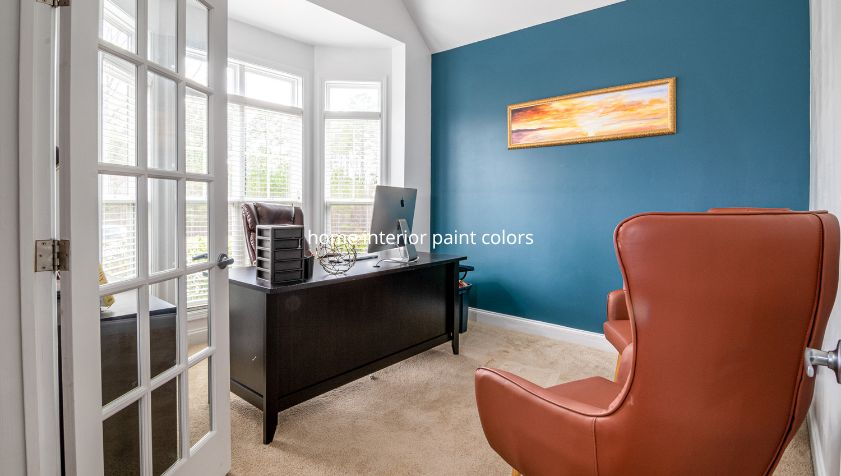Home interior paint colors are one of the most important elements that shape the character, mood, and visual comfort of every room. When people talk about home interior paint colors, they often think only about choosing a beautiful shade, but the truth is that selecting the right color involves understanding light, room size, personal preference, style, and even psychological effects. In many homes today, homeowners explore various home interior paint colors to create spaces that feel cozy, modern, elegant, or energizing. Because home interior paint colors influence how we feel in our living space, choosing the right ones can transform any room from plain to impressive. Whether you prefer soft tones, bold shades, or neutral palettes, home interior paint colors play a major role in building the right atmosphere. This guide will help you understand how to choose the right home interior paint colors for each room and help you avoid common mistakes while exploring the latest color trends.
1. Why Home Interior Paint Colors Matter
The paint color you choose is not just decoration—it affects:
-
Mood and emotions
-
Room dimension perception
-
Lighting reflection
-
Harmony between furniture and décor
-
Overall style of the home
For example, warm colors can make a room feel inviting, while cool tones create calmness. Neutral shades provide balance and flexibility, especially for modern homes.
Because color influences psychology, picking the wrong shade may make a room look darker, cramped, or overwhelming. This is why homeowners often spend time comparing swatches before making a final decision.
2. Understanding Color Psychology in Interior Design
Before choosing paint, it’s helpful to know what different colors represent.
a. Warm Colors
Warm colors bring energy, coziness, and friendliness.
-
Red: Stimulating and bold; best for dining rooms or accent walls
-
Orange: Cheerful and warm; good for creative spaces
-
Yellow: Bright and uplifting; suitable for kitchens and living rooms
b. Cool Colors
Cool colors create relaxation, freshness, and peace.
-
Blue: Calming; great for bedrooms and bathrooms
-
Green: Refreshing and natural; ideal for any room
-
Purple: Elegant and luxurious; perfect for bedrooms or living rooms
c. Neutral Colors
Neutrals are timeless and versatile.
-
White: Clean, spacious, minimalist
-
Beige: Warm, welcoming, classic
-
Gray: Modern, balanced, sophisticated
Color psychology is essential because it ensures the room’s atmosphere matches its function.
3. Popular Home Interior Paint Colors for Modern Homes
Modern interior design often uses simple, calming palettes. Here are the most popular choices:
1. Soft Whites
Examples: Pure White, Snowbound
Why choose it: Creates a clean look, makes rooms appear larger, and works with any décor.
2. Light Gray
Examples: Cool Gray, Silver Drop
Benefits: Stylish, fresh, and perfect for modern or minimalist rooms.
3. Beige & Greige
Greige is a combination of gray and beige.
It adds warmth and elegance with a subtle modern touch.
4. Sage Green
A top trend in recent years.
This color feels calm, natural, and soothing—ideal for bedrooms or living rooms.
5. Navy Blue
A bold yet classy option for accents and feature walls.
6. Terracotta
Warm and earthy; great for Mediterranean or rustic-style homes.
7. Pastel Blue or Blush Pink
Soft colors perfect for nurseries, bedrooms, or small cozy spaces.
4. Best Home Interior Paint Colors for Each Room
Each room has a different purpose, so choosing the right color can enhance its function.
a. Living Room
The living room is where family and guests gather.
Suggested colors:
-
Off-white
-
Warm beige
-
Olive green
-
Light gray
-
Taupe
These shades create comfort and harmony.
b. Bedroom
Bedrooms need relaxation and calmness.
Ideal colors:
-
Soft blue
-
Sage green
-
Lavender
-
Warm neutrals
-
Pastel shades
Dark colors can also work as an accent wall.
c. Kitchen
Kitchens should feel fresh and lively.
Recommended colors:
-
White
-
Cream
-
Light blue
-
Soft green
-
Yellow accents
Avoid overly dark colors that can make the area feel smaller.
d. Bathroom
Clean and relaxing shades are best.
Options:
-
Aqua blue
-
Soft white
-
Light gray
-
Seafoam green
e. Home Office
Productivity-focused colors:
-
Cool blue
-
Soft green
-
Neutral gray
-
White with bold accents
These shades improve focus and reduce stress.
5. How to Choose the Right Home Interior Paint Colors
Choosing paint can be confusing, but these steps make it easier:
Step 1: Analyze the Room’s Lighting
Natural light brings out the true color.
Warm light makes some colors look more yellow, while cool light enhances blue tones.
Step 2: Match with Furniture
Your wall color should complement:
-
Sofa
-
Cabinets
-
Flooring
-
Curtains
-
Artwork
Step 3: Consider the Room Size
Light colors = larger appearance
Dark colors = cozy atmosphere
Step 4: Use Sampling
Always test paint samples on the wall.
Colors often look different in-store compared to at home.
Step 5: Choose a Color Palette
Stick to 2–3 main colors to keep the space balanced.
6. Current Trends in Home Interior Paint Colors
2024–2025 color trends highlight:
1. Earthy Tones
Terracotta, clay, warm browns
These colors create natural and cozy environments.
2. Nature-Inspired Greens
Sage green, eucalyptus green
Popular for eco-friendly and biophilic design styles.
3. Warm Minimalist Shades
Beige, cream, ivory
Perfect for modern minimalist homes.
4. Soft Blues
Sky blue, dusty blue
Brings tranquility into the space.
5. Dark Accents
Charcoal, deep navy
Used sparingly to add drama and depth.
7. Mistakes to Avoid When Choosing Home Interior Paint Colors
Many homeowners regret their paint choices because of the following mistakes:
-
Choosing a color based only on online photos
-
Forgetting to test color samples
-
Using too many bold colors in one space
-
Ignoring lighting conditions
-
Not considering existing furniture
By avoiding these, you can achieve a more harmonious result.
8. Tips for Combining Multiple Colors
If you want more variety, follow these principles:
1. 60-30-10 Rule
-
60% main color
-
30% secondary color
-
10% accent color
2. Use Complementary Colors
Opposite colors on the color wheel create contrast.
3. Use Analogous Colors
Colors beside each other (blue-green, red-orange) create harmony.
4. Neutral Balance
If using bold shades, balance them with whites or grays.
9. Recommended Paint Finishes
Different rooms require different finishes:
-
Matte: Best for ceilings and low-traffic areas
-
Eggshell: Versatile for most walls
-
Satin: Great for kitchens and hallways
-
Semi-gloss: Ideal for trim and doors
-
Gloss: For features you want to highlight
Finish affects the final appearance and durability.
10. Final Thoughts
Choosing the right home interior paint colors is a combination of understanding psychology, lighting, room function, and personal taste. With so many beautiful shades available today, you can easily transform your home into a stylish, comfortable, and harmonious space. Whether you’re updating a single room or repainting the whole house, the right color choice can make a huge difference in how your home feels and functions.
Source :
-
Sherwin-Williams Color Psychology Guide
-
Benjamin Moore Interior Color Trends 2024
-
Behr Paint Official Color Recommendations
-
Architectural Digest – Interior Paint Tips
-
Houzz – Home Interior Color Ideas


